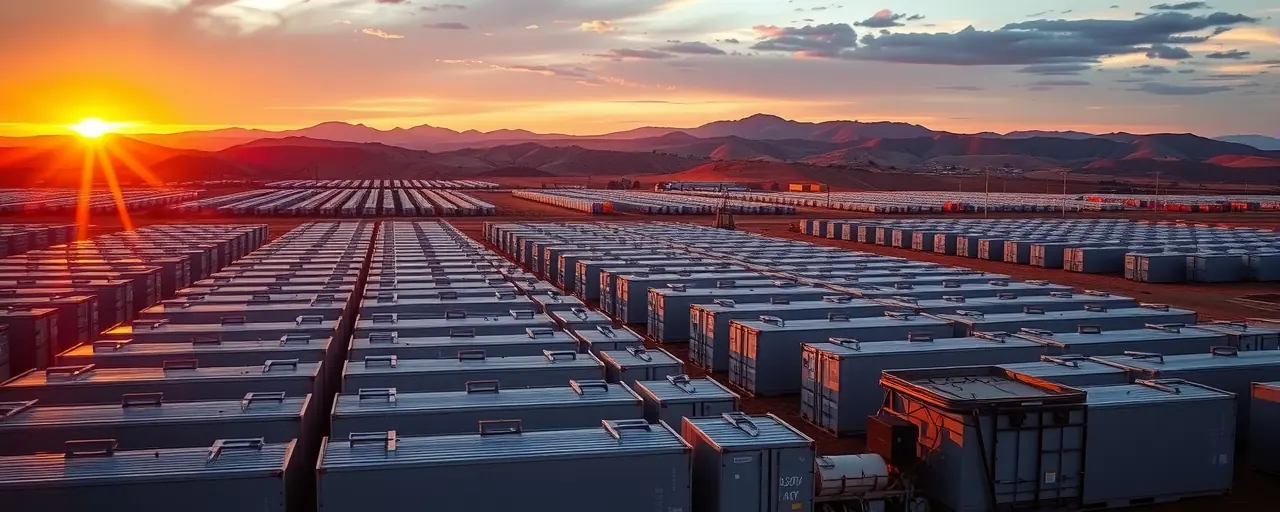Powering Up Fast
California’s energy system is transforming at a remarkable pace. The state now has 15,763 megawatts of battery storage capacity, a figure that’s surged 1,944 percent since 2019. In just the past eight months, 2,300 megawatts came online. These batteries capture energy from wind and solar, releasing it when demand peaks, keeping lights on and businesses running smoothly.
The growth builds on years of effort. In 2019, the state’s storage stood at 770 megawatts. Large facilities like Moss Landing and Alamitos now anchor the system, showing batteries can handle modern grid demands. By 2045, California plans to reach 48,000 megawatts of battery storage and 4,000 megawatts of long-duration systems, which deliver power for up to ten hours. The aim is clear: a grid that’s both clean and dependable.
The Role of Batteries
Batteries do more than store power; they make renewables practical. Solar and wind energy vary with the weather, but people need electricity around the clock. Batteries store surplus energy and release it during high-demand periods. This capability helped California achieve 100 percent clean electricity for the equivalent of 51 days last year, a milestone in its push for sustainability.
Smaller systems are also making a difference. About 2,500 megawatts—roughly 16 percent of the state’s total—come from residential and commercial batteries. These power homes, schools, and offices, offering backup during outages and easing grid pressure. For many, they’re a step toward greater control over energy use, especially in a state prone to wildfires and heatwaves.
Navigating Safety and Scale
Expanding storage so quickly isn’t simple. Large battery systems need strict safety measures to prevent fires or failures. Last month, the California Public Utilities Commission introduced new safety standards for these facilities. An upcoming update to the California Fire Code will add more protections. These efforts aim to ensure the technology remains safe as it grows.
Perspectives on this growth vary. Some policymakers, especially those favoring market-led approaches, argue that strict regulations might delay projects or increase costs. They cite federal estimates of $25 billion in yearly grid congestion costs and push for private investment to drive progress. State officials, however, emphasize that clear safety rules are essential for reliability, particularly as storage becomes a bigger part of the grid.
Jobs and Economic Growth
The rise of battery storage is creating more than just energy. Nationwide, clean energy projects have attracted over $500 billion in investments since 2022, fueling thousands of jobs in California alone. From building facilities to developing tech, these roles are reshaping communities. In 2023, the U.S. clean energy sector grew three times faster than overall employment, adding 150,000 jobs.
This progress ties to broader gains. California’s greenhouse gas emissions have dropped 20 percent since 2000, while its economy expanded by 78 percent. Investments in storage and renewables show that environmental goals can boost prosperity, though concerns linger about the costs of upgrading infrastructure on this scale.
The Road Forward
California’s battery storage push is impressive, but challenges remain. Adding the projected 5,600 megawatts of capacity in 2025 could hit snags from permitting delays or supply-chain issues. Upgrading transmission lines, which can take a decade, is also vital to support more renewable energy. Grid operators are leaning on better forecasting and real-time pricing to adapt, but the system must keep evolving.
The state’s plans go beyond batteries. Long-duration storage, hybrid solar-battery projects, and smarter grid tools are all in the works. These aim to make clean energy the backbone of the system, meeting growing needs from electrification and data centers.
For Californians, this points to a future with cleaner air, fewer outages, and new economic opportunities. Yet questions about costs, safety, and the pace of change persist. The journey to 2045 is bold, and its outcome hinges on blending innovation with practical solutions.
